Fiber Optic Cable Installation - Midspan Access
Simplifying
Installation Of Drops
Many
installations involve splitting the fibers in a cable or
dropping a small fiber count cable from a large backbone
cable. Backbone cables of 144-288 fibers are common and
larger ones are becoming more common too. Drop cables are
often only 2-12 fibers, meaning most fibers are continuing
straight through the drop point. Midspan access involves
opening the cable by removing the jacket and strength
members, opening the buffer tube and splicing only the
fibers being dropped at that point. The untouched buffer
tubes from the opened cable are carefully rolled up and
stored in the same splice closure as the fibers that will
be separated and spliced to a drop cable.
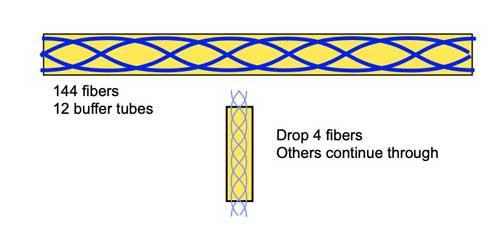
If there is a method of splicing only the 4 drop fibers
instead of the 144 fibers, we will only have 4 splices
instead of 144 or 146 depending on the architecture of our
system. The difference is according to how the drop is
configured.
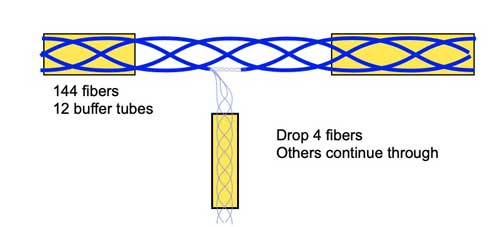
If you are building a star network where every drop links
back to the origin of the network, you will splice 4
fibers in the cable to the drop cable, leaving 4 splices
on 4 fibers (instead of 144 splices if the backbone cable
is cut and respliced.
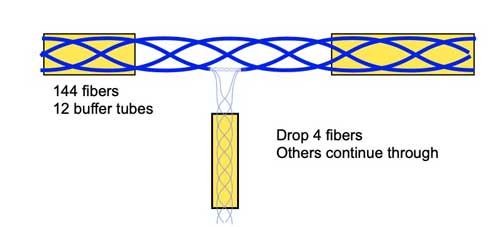
If you are building a ring network, you may only be
splicing two fibers going to the drop and two that are
continuing along the ring network.
All this may seem obvious but in actual practice requires
some knowledge, skills and careful workmanship. To do a
proper job. Fortunately, manufacturers of cables and tools
have good information available online on how to do it,
and FOA Master Instructor Joe Botha has provided FOA with
a application
note on how midspan access is done in his classes
also.
The Process
The basic process is simple. We will look at a loose tube
cable but processes exist for ribbon cables also,
involving splitting ribbons to access the drop fibers.
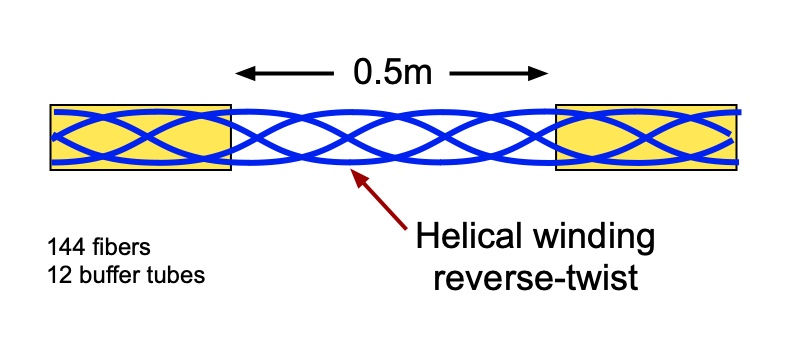
Following the cable manufacturer's directions, remove a
short length of cable jacket to find the reversal point
for the helical winding of the buffer tubes. The reversal
point will the center of the opening for access to make
unwinding tubes neater. Find the ripcords to use for
removing a longer length of the jacket.
Note:
If you open up on a reverse twist and end on reverse
twists, the tubes will enter the closure as straight as
an arrow. And
where the reverse twist philosophy is ignored, the tubes
entering a closure, will need to be forced into position
and will be under bending stress. On some
cables, you may be able to find the reversal point by
looking at the cable jacket - if the jacket is thin
enough that the location of the tubes shows through
the cable jacket. Some manufacturers also mark the
cable to help locate the reversal point.
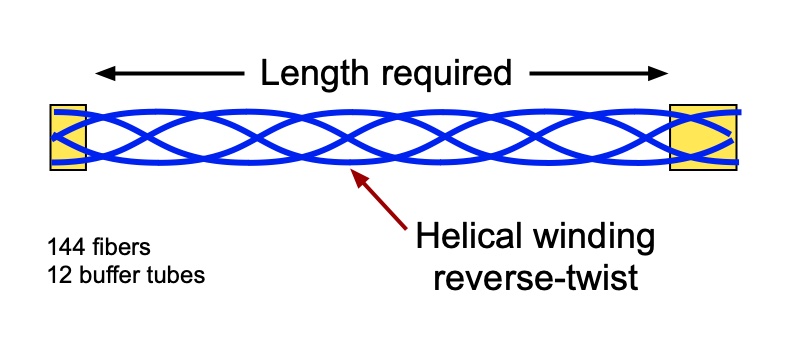
You must remove the jacket of the cable for a
specified length according to the cable type and splice
closures used. After removing the cable jacket, you remove
unnecessary binder tapes and water blocking tapes and
strength members, leaving enough of the stiff central
member on both ends to attach to the splice closure.
Identify the tube with the fibers to be spliced to the
drop cable and set aside while carefully coiling the other
tubes for storage in the closure.
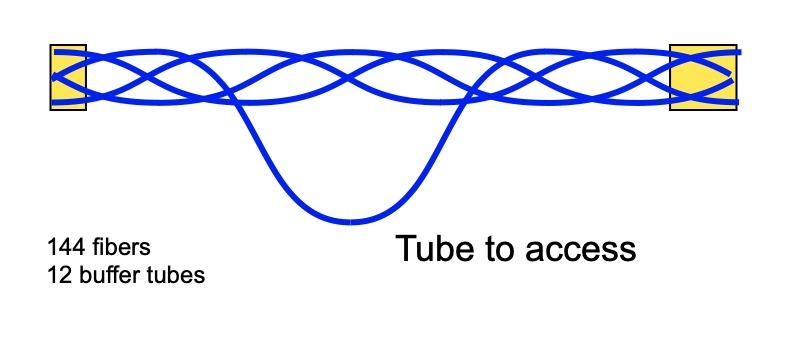
Separate the buffer tube that will be opened from the
tubes that will pass through the splice closure. They will
be secured in the closure.
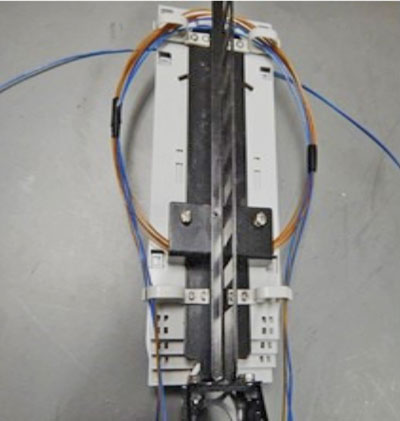
To open the buffer tube, you need a midspan access tube
that shaves off a section of the tube to allow removal of
the fibers without damaging them. Here two types of Miller
tools that shave the tube:
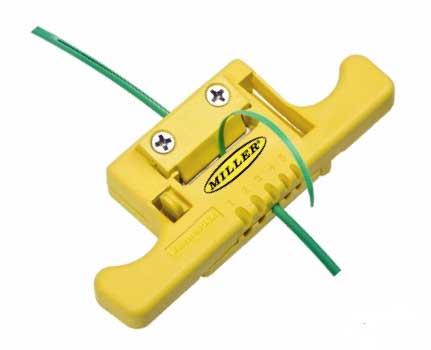
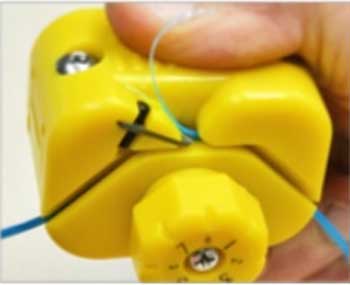
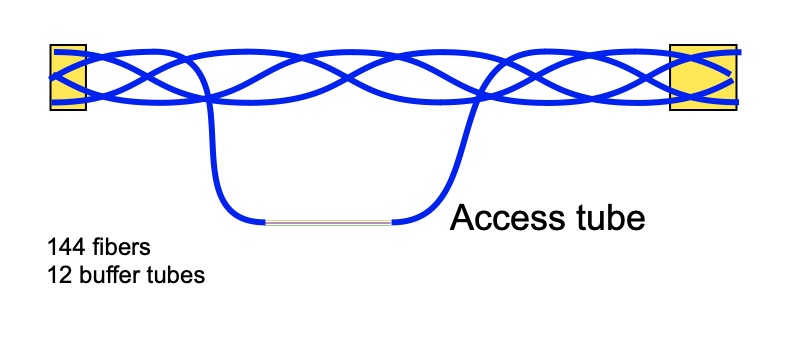
After
shaving the tube and removing the fibers - count carefully
to ensure you remove all the fibers! - you can cut the
tube off to have bare fibers only for the length you need
to splice on the drop cable. Secure the tube to the splice
tray. All these fibers will be placed in a splice tray for
safe storage but only the fibers being dropped will be cut
and spliced to the drop cable. This is what the closure
will look like, ready for splicing the drop cable.
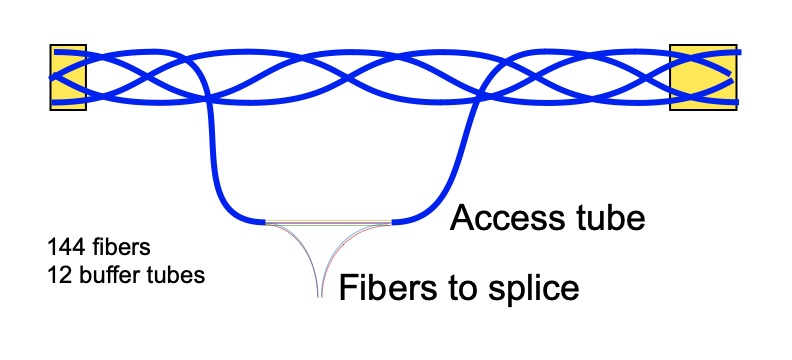
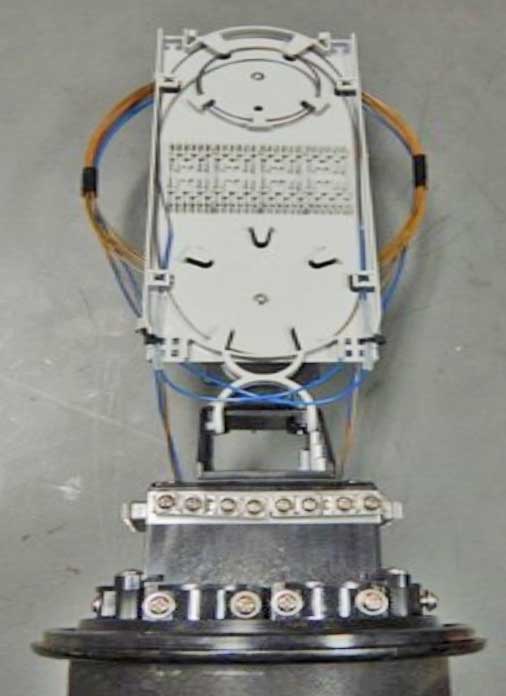
The
closure is ready for the addition of the drop cable and
splicing fibers.
Note: The illustration is done with OSP loose-tube
cable but the process is similar with ribbon cables
except pass-through ribbons need protecting in a
splice tray. The same technique can also be used with
tight-buffer distribution cable for premises networks.
Search online for "midspan access" to find lots of
application notes and videos on the subject. Or talk to
your fiber optic cable vendors.
Application
note - hands-on midspan access
More
on Outside Plant Construction and Installation
Table
of Contents: The FOA Reference Guide To Fiber Optics
|

